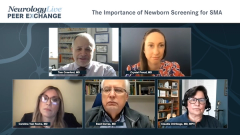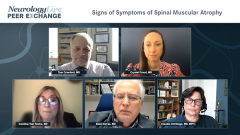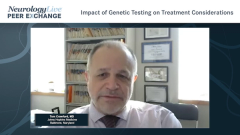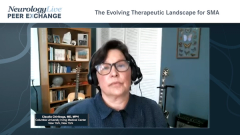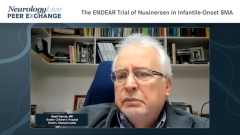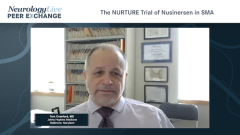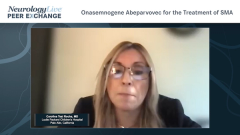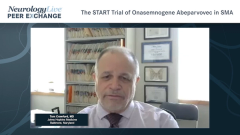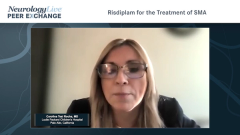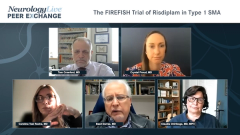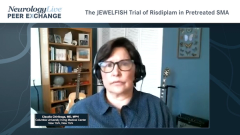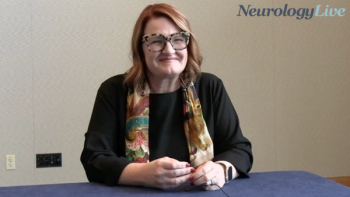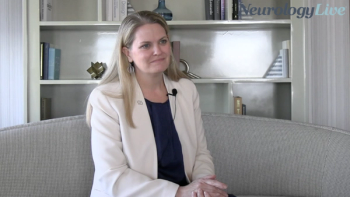
The SPR1NT Trial of Onasemnogene Abeparvovec in SMA
Claudia Chiriboga, MD, MPH reviews data from the SPR1NT clinical trial of patients with presymptomatic SMA and emphasizes how the trial highlights the importance of prenatal screening and early treatment.
Episodes in this series

Crystal Proud, MD: Now that we’ve covered some of the impact of onasemnogene abeparvovec on the patient population seeing symptoms, let’s briefly review the data that came about with the SPR1NT phase 3 clinical trial. I believe that, in combination with the NURTURE data, provided a good foundation upon which to argue for newborn screening. Claudia, perhaps you could briefly review the SPR1NT data for us.
Claudia A. Chiriboga-Klein, MD, MPH: Yes, of course. This was an open-label trial. The only placebo-controlled study is the ENDEAR study that Basil mentioned; it was the first and only such study because the placebo group fared so poorly. This study was open-label, treating infants who were identified as having SMA [spinal muscular atrophy] presymptomatically. That means these infants have to be free of any clinical signs of disease as well as not have any issues with feeding, swallowing, or anything else. They have a criterion that CMAP [compound muscle action potential] has to be above a certain level to ensure that the infants are indeed presymptomatic. You can argue about whether they truly are pre-symptomatic and that we just can’t measure the early symptoms. They identify those with 2 SMN2 copy numbers, as well as those with 3 SMN2 copy numbers. If you stratify them by that group, I think Tom alluded to this a bit earlier, there is a bit of a divergence among those who have the 2 copy numbers, as opposed to those with 3 SMN2 copy numbers.
For patients with 3 SMN2 copy numbers, their trajectory, developmentally, is normal, whereas not so much for those with 2 SMN2 copy numbers, though they are keeping up with their milestones if you use a cruder measurement, such as the WHO [World Health Organization] developmental milestones. It is important to know that these patients in this trial do not have any of the end points that were part of what was being assessed for STR1VE. None of them required permanent ventilation, even nocturnal, and none of them required nutritional support. Overall, it was a fantastic outcome in terms of figuring out what to expect with prenatal screening, early identification, and treatment. Again, we saw that bit of a divergence that makes practitioners want to be a little more urgent in treating patients with an SMN2 copy number of 2. Now the adverse effects were minimal, and it also, I think, addresses the fact that the immune system in mature systems, such as neonates, or those under 6 weeks of age, have a lot fewer of the complications that we have seen in older children. The transfection rate is likely greater, too, because of the immune system and the blood-brain barrier being more open and more immature.
Crystal Proud, MD: Thank you for watching this Neurology Live® Peer Exchange. If you enjoyed the content, please subscribe to our e-newsletters to receive upcoming Peer Exchanges and other great content right in your inbox.
Transcript Edited for Clarity
Newsletter
Keep your finger on the pulse of neurology—subscribe to NeurologyLive for expert interviews, new data, and breakthrough treatment updates.

